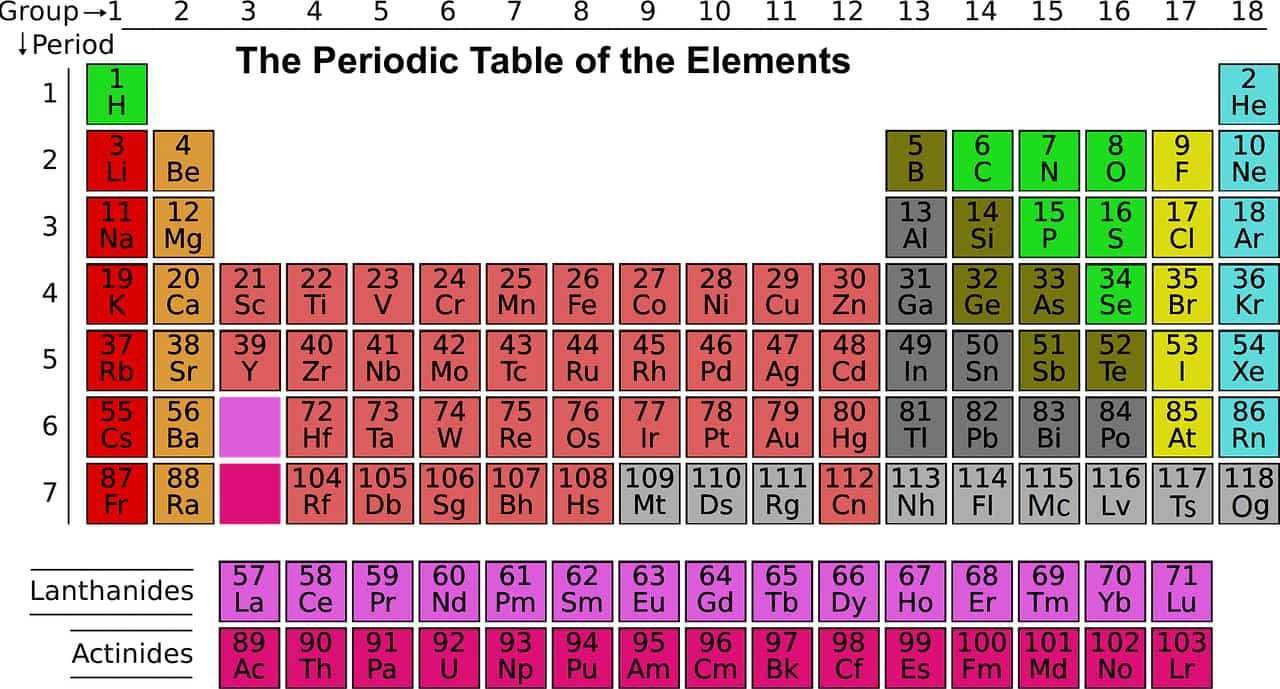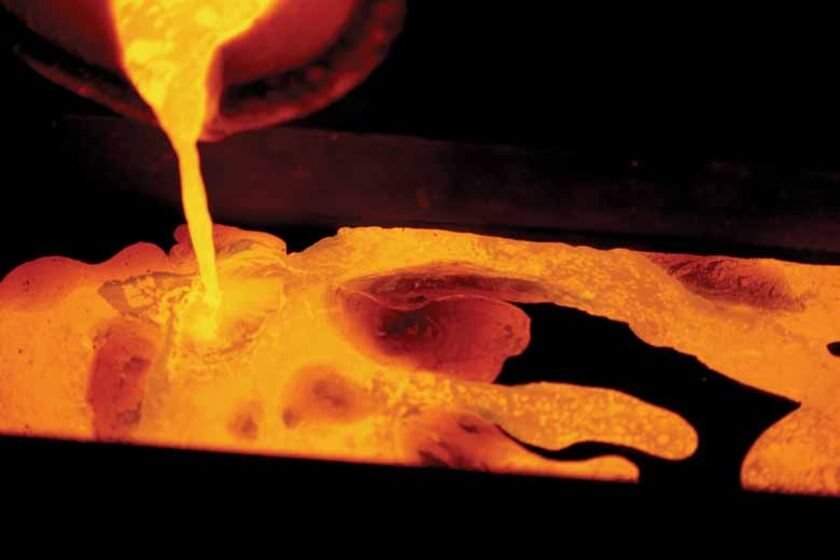Fluorine is the chemical element with atomic number 9, symbol F
It is the first element of the group of halogens. The corresponding single body is difluor (made up of F2 molecules), often referred to simply as fluorine. The fluoride ion from dissolved fluoride salts inhibits dental cavities, and so finds use in toothpaste and water fluoridation. Global fluorochemical sales amount to more than US$15 billion a year.
It is the most chemically and electronegatively reactive yellow-green toxic univalent halogen gas of all the elements. In its pure form, he is very dangerous, can cause severe chemical burns so in contact with the skin.
The only stable isotope is 19F. The least unstable radioisotope is 18F, whose half-life is just under 2 h and which transmutes into oxygen-18 (in 97% of cases by β + decay and otherwise by electron capture).
Fluorine is the most reactive of the chemical elements, it is also generally linked to other elementsa. It has the strongest electronegativity, with a value of 3.98. It is the 13th most abundant element in the earth’s crust. Some plants and some bacteria can synthesize fluorinated compounds, but fluoride has no metabolic role in mammals.
Under normal temperature and pressure conditions, the single fluorine body appears as difluor F2, a pale yellow, very toxic and extremely corrosive diatomic gas. The melting point of difluor is −219 ° C and its boiling point of −188 ° C, temperatures between which difluor is liquid, with a density of 1,500 kg · m-3. Fluoride causes very serious burns on contact with the skin, mucous membranes, and bones. Georgius Agricola already described the existence of fluorine in 1530 but this element was not isolated until 1886, by Henri Moissan.
Usage of Fluorine
Difluor is too reactive for direct use in its pure state. Its many chemical compounds, on the other hand, have a multitude of applications.
Some examples :
- Fluorine is used in the composition of plastics with a low coefficient of friction; fluoropolymers such as PTFE (polytetrafluoroethylene) commercially known among others under the trademark Teflon;
- Fluorine is also used in the composition of fluorinated surfactants;
- Many fluorinated gases, for example freons, are used as refrigerants in refrigeration and air conditioning systems. However, chlorofluorocarbons (CFCs) have been banned from these applications because of their probable contribution to the hole in the ozone layer and to the greenhouse effect;
- Hydrofluoric acid (HF) has the unique property of being able to dissolve almost all inorganic oxides. It is in fact used to etch glass, to remove surface oxides from silicon in the semiconductor industry, as a catalyst for alkylation reactions of isobutane and butene in petroleum refining and to remove chemicals. oxidized impurities from stainless steel;
- In the nuclear fuel cycle, uranium hexafluoride UF6 is used to separate the different isotopes of uranium by gas diffusion. It is produced in a flame oven by the chemical reaction of difluoride with uranium tetrafluoride UF4. In this context, difluor was used during the development of the atomic bomb, on the occasion of the Manhattan Project;
- Cryolite, a mineral composed of sodium aluminum fluoride (Na3AlF6), is used as an electrolyte in the production of aluminum by electrolysis;
- Monatomic fluorine is used for “plasma ashing” in the manufacture of semiconductors;
- Along with other compounds, fluorine is used in the manufacture of over 100 commercial fluorinated compounds, such as high temperature plastics;
- The 18F radioactive isotope of fluorine, a positron emitter, is the most widely used nucleus in positron emission tomography (PET – a new non-invasive medical visualization technique) due to its half-life of 110 minutes, relatively long;
- Sodium fluoride has been used as an insecticide, particularly against cockroaches or as a pest control;
- Fluorides are added to salt (42% of salt sold to French households is iodized and fluorinated29) and toothpastes, or sometimes in certain water sources or in certain foods to fight against dental caries. This use is contested by various associations and consumer pressure groups around the world. In December 2008, the Afssaps modified its recommendations on fluoridated prescription31, and no longer recommends any supplement between 0 and 6 months. Beyond that, fluoride intake is reserved for children at high caries risk.
- Chemical weapon: sarin gas (classified as a weapon of mass destruction by resolution 687 of the United Nations
- Security Council; and sadly used on March 20, 1995 in Tokyo) and soman to name a few…
- Medicines: some antidepressants like fluvoxamine, paroxetine, escitalopram, fluoxetine (Prozac), etc.
Health impact
Small amounts of fluoride are naturally present in water, air, plants, animals. As a result, humans are exposed to fluoride through the food, the water they drink and the air they breathe. Fluoride can be found in any type of food in relatively small amounts. Higher amounts of fluoride are found in tea and shellfish. Fluoride is essential for maintaining the strength of our bones. It can also protect us against dental cavities, when used as toothpaste twice a day. If fluoride is taken in too frequently, it can cause osteoporosis and cavities, it can damage the kidneys, bones, nerves and muscles.
Fluorine gas is rejected by industries. This gas is very dangerous, at very high concentrations it can cause death. In low concentrations, it causes irritation to the eyes and nose.
Environmental impact
Fluoride occurs naturally in the earth’s crust where it can be found in rocks, coal and clay. Fluoride is dispersed in the air when the soil is blown away. Hydrogen fluoride can be released into the air during combustion processes in industry. Fluoride in the air eventually falls back on the ground or in the water. When fluorine is bonded to very small particles, it can stay in the air for a long time.
When fluorine in the air is found in water, it is deposited in the sediment. When it settles on the ground, fluorine binds strongly to the particles. In the environment, fluorine can change shape.
Fluoride found in soil can accumulate in plants. The amount taken up by plants depends on the type of plant, the type of soil, and the amount and form of fluoride present in the soil. For plants that are sensitive to fluoride exposures, even low concentrations can cause damage and hamper growth.
Animals that consume plants containing fluoride can accumulate significant amounts in their bodies. Fluoride first accumulates in the bones. An animal exposed to high concentrations of fluoride suffers from cavities and bone breakdown. Too much fluoride can also interfere with the development of the nails.
Fluorine in the periodic table
| Atomic number (Z) | 9 |
|---|---|
| Group | group 17 (halogens) |
| Period | period 2 |
| Block | p-block |
| Electron configuration | [He] 2s2 2p5 |
| Electrons per shell | 2, 7 |
Physical properties
| Physical properties | |
|---|---|
| Phase at STP | gas |
| Melting point | (F2) 53.48 K (−219.67 °C, −363.41 °F) |
| Boiling point | (F2) 85.03 K (−188.11 °C, −306.60 °F) |
| Density (at STP) | 1.696 g/L |
| when liquid (at b.p.) | 1.505 g/cm3 |
| Triple point | 53.48 K, 90 kPa |
| Critical point | 144.41 K, 5.1724 MPa |
| Heat of vaporization | 6.51 kJ/mol |
| Molar heat capacity | Cp: 31 J/(mol·K) (at 21.1 °C) Cv: 23 J/(mol·K) (at 21.1 °C) |
Vapor pressure
| P (Pa) | 1 | 10 | 100 | 1 k | 10 k | 100 k |
|---|---|---|---|---|---|---|
| at T (K) | 38 | 44 | 50 | 58 | 69 | 85 |
Atomic properties
| Atomic properties | |
|---|---|
| Oxidation states | −1 (oxidizes oxygen) |
| Electronegativity | Pauling scale: 3.98 |
| Ionization energies |
|
| Covalent radius | 64 pm |
| Van der Waals radius | 135 pm |
Other properties
| Other properties | |
|---|---|
| Natural occurrence | primordial |
| Crystal structure | cubic |
| Thermal conductivity | 0.02591 W/(m·K) |
| Magnetic ordering | diamagnetic (−1.2×10−4) |
| CAS Number | 7782-41-4 |
History
| History | |
|---|---|
| Naming | after the mineral fluorite, itself named after Latin fluo (to flow, in smelting) |
| Discovery | André-Marie Ampère (1810) |
| First isolation | Henri Moissan (June 26, 1886) |
| Named by | Humphry Davy |
Main isotopes
| Main isotopes of fluorine | ||||||||||||||||||
|---|---|---|---|---|---|---|---|---|---|---|---|---|---|---|---|---|---|---|
| ||||||||||||||||||
Periodic Table of Elements | Complete List of Chemical Elements by Group, Name, Symbol, Color and Type

Sources: Royal Society of Chemistry, Chemicool, Live Science, Royal Society of Chemistry
Photo credit: Prof. Dr. Sebastian Riedel (Freie Universität Berlin) / Wikimedia Commons
Photo explanation: Liquid fluorine at -196°C (-320,8°F)


